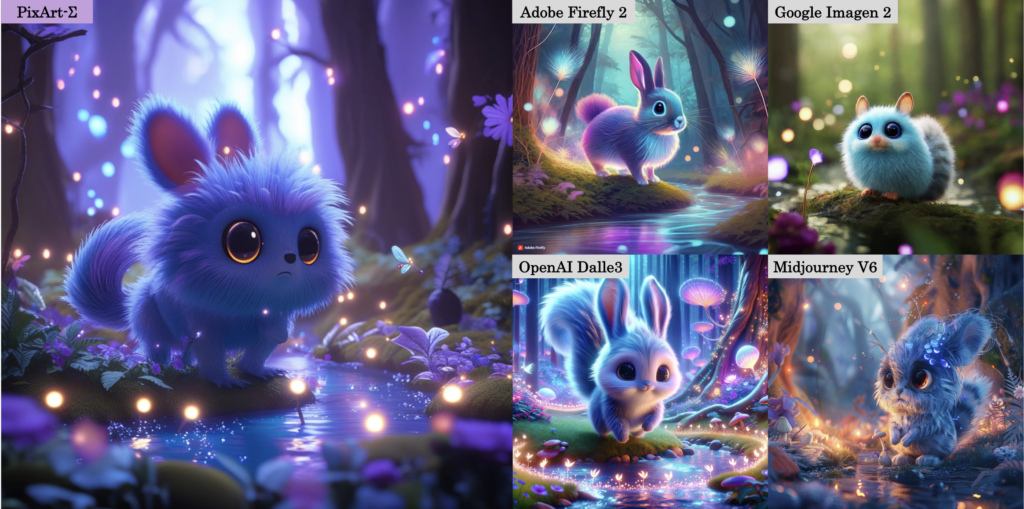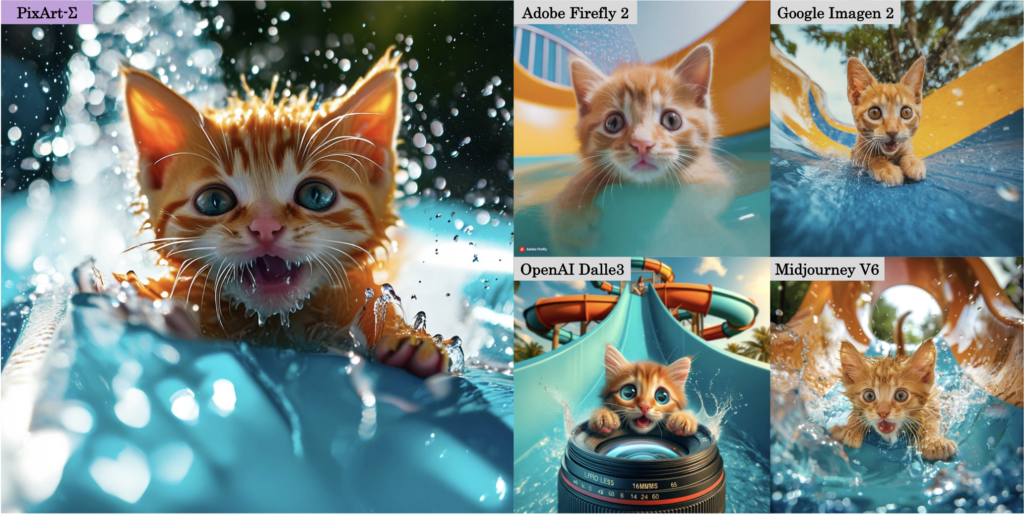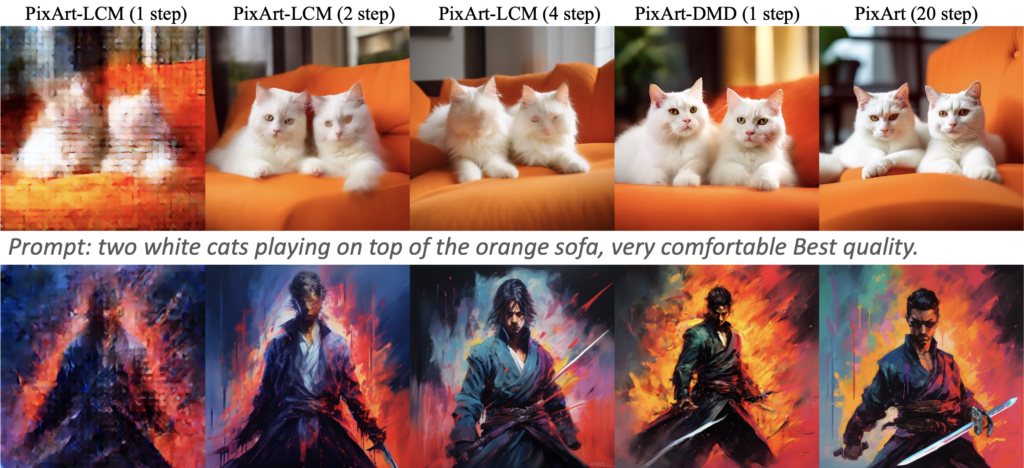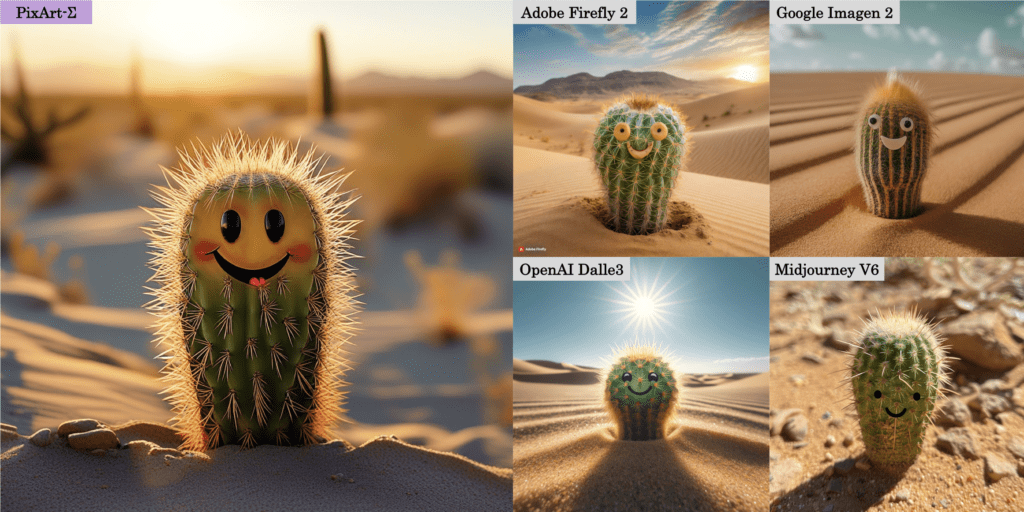New Diffusion Transformer Model Sets Benchmark for 4K Text-to-Image Generation
- High-Quality Training Regimen: PixArt-Σ employs a ‘weak-to-strong training’ strategy, utilizing superior-quality data to enhance fidelity and prompt adherence, moving beyond the capabilities of its predecessor, PixArt-α.
- Efficient Token Compression: A newly introduced attention module compresses keys and values within the model, boosting efficiency and supporting the generation of ultra-high-resolution images.
- Broad Application Scope: With its ability to generate 4K resolution images, PixArt-Σ is ideally suited for high-demand sectors like film and gaming, where detail and visual quality are paramount.

In the rapidly evolving field of Artificial Intelligence Generated Content (AIGC), the release of PixArt-Σ marks a significant technological leap. Developed as an upgrade to the PixArt-α, this new Diffusion Transformer model (DiT) not only enhances the quality of generated images but does so with remarkable efficiency and alignment to textual prompts.
Technological Advancements
PixArt-Σ’s innovative training approach, termed “weak-to-strong training,” leverages a progressively enriched dataset that transitions from basic to complex imagery. This method allows the model to refine its capabilities continuously, leading to outputs that closely mirror the input specifications with higher fidelity than previously seen. The introduction of an efficient token compression mechanism within its architectural framework allows PixArt-Σ to handle the substantial computational demands of 4K image generation effortlessly.

Practical Applications
The practical applications of PixArt-Σ are vast, particularly in industries that rely heavily on visual content. For instance, in the film industry, where promotional materials and concept art require high resolution and detail, PixArt-Σ can generate promotional posters and concept art with ease. Similarly, in the gaming sector, it can create detailed game assets and environments, enhancing the visual experience without the traditional overheads associated with high-quality 3D modeling.

Challenges and Ethical Considerations
Despite its advancements, PixArt-Σ faces challenges, particularly in generating specific scenes and maintaining the accuracy of complex prompts. There are also ethical considerations to contend with, such as the potential for generating stereotypical or biased content. Addressing these issues requires continuous refinement of the model’s training datasets and perhaps more sophisticated content moderation mechanisms.

As AI continues to integrate deeply into creative processes, models like PixArt-Σ not only demonstrate the potential of AI to augment human creativity but also highlight the need for careful consideration of the technology’s broader impacts. The ongoing development of PixArt-Σ will likely focus on enhancing the model’s ability to handle diverse and complex generation tasks while mitigating any negative impacts on social equity and representation.
